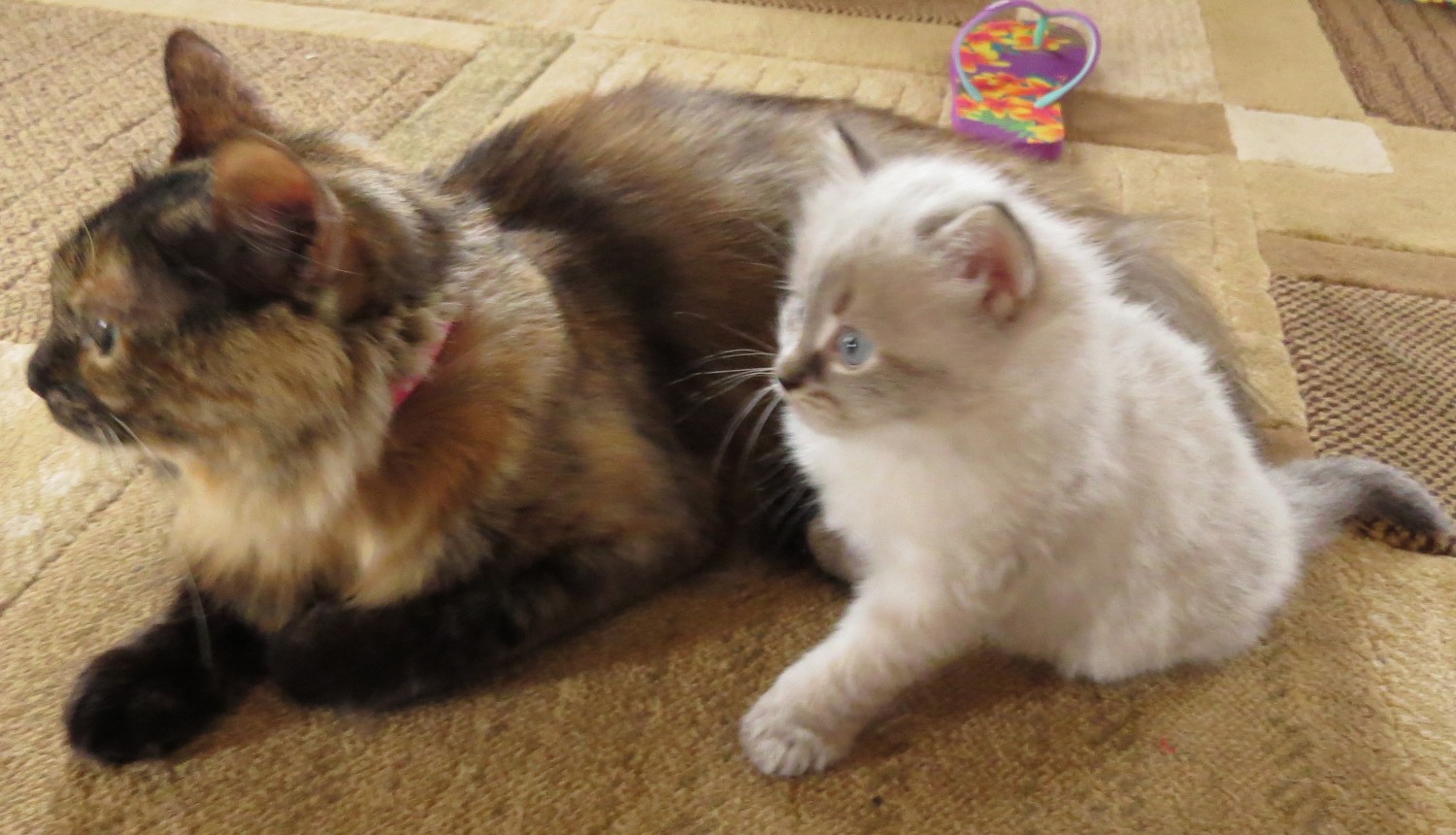This page has suggestions for helping to ease kitten’s transition to a new home. The following are recommendations based on what we have found helpful over the years. Be sure to use your Vet as a resource.
Picking up new kitten:
When picking up your kitty, bring a cat carrier and small towel or blanket to rub on mom and pick up her scent. The kitten can latter sleep with it to ease the transition. Cats should always ride in carriers as they can easily end up under the gas pedal or be injured. If you leave the carrier out in a place the kitten will play in it, it will become familiar making future vet trips less stressful.
Upon arriving home, immediately show kitten where the litter box and food are located. In the beginning it should be easily accessible at all times. Siberians are bright and usually start using the litter box as soon as they are old enough to climb into it.
Food:
*** If you have food allergies, be sure to check the labels… Some brands have seafood and other allergens. Certain litter brands may contain walnut shells or corn. Scented litter may bother owners with allergies.
For the first year, use food that is specifically labeled for ‘all stages’ or ‘kitten’. To ease the transition, stick to the same brand as the breeder (we serve Blue Buffalo or Blue Wilderness Kitten food). If you later change brands, mix old and new food together to slowly help their tummies adjust. In the beginning, it is best to have a bowl of fresh water and dry food available at all times so kittens can free feed. We prefer dry food as wet/canned tends to smell and be messier.
Create a Safe Haven- Kitten Proof Zone:
Moving to a new home can be frightening, so don’t be surprised if your kitten hides under a bed and/or doesn’t eat much the first couple days. It may help to confine him to one room initially. Create a ‘safe haven’ – kitten proof room with litter box and water/food. This will build kittens sense of security and allow you to leave the house without worrying
Young kittens will squeeze and climb into unexpected places- up inside recliner chairs, dishwashers, refrigerators, and behind furniture etc… They will chew electric cords and get tangled in curtain cords. Swallowing dental floss and eating certain house plants can be fatal to cats. If you have plants, this link is a good resource: CFA list of toxic plants. Until you know what to expect, keep a close eye on your kitty and leave him in a safe room when you are asleep or away from home. As he matures this will be less of an issue.
It is important to train kittens to stay off of kitchen counters and hot stoves while young. Some people have luck temporarily covering off limit areas with tinfoil, double sided tape, or shelf liner (sticky side up). Cats dislike the texture and will learn not to go on those surfaces. If necessary, a spray bottle with water can be used to deter them (but must be used sparingly or it will loose its effectiveness and create an angry cat). Some owners even find growling or hissing at them effective.
Trim Claws: Declawing cats is extremely painful and may lead to behavioral issues. It is also unnecessary if you trim your cats’ nails regularly and give them appropriate places to scratch. Train your kitten by immediately move him to a scratching post as soon as you see him start to scratch. Nails must be trimmed regularly. (Our cats only scratch when they are overdue for a trim). Ask your vet for a lesson on nail trimming since cutting them too short will hurt and cause them to panic during future manicures. In the beginning try having someone help by scruffing the kitten or cut just a few paws at a time when he is sleepy. To help him get comfortable having his toes touched, periodically touch and handle paws while petting/snuggling.
Bathing Kitten: Most pet stores carry kitten shampoo which is gentler for their skin. Make their first experience positive by ensuring the water is warm and you are speaking calmly. We find it easiest to scruff young kittens under a faucet or have pitchers of water ready to pour on them to wash off the soap. Do not pour water directly on their face- wash it with a wet cloth at the end of the bath. If you have allergies, wiping the cat’s fur with a damp cloth in between baths will help reduce allergens from litter boxes and saliva.
Brush Regularly– Since siberians have a thick undercoat, it can easily mat. As cats age, they can become lazier about grooming themselves. Be sure to brush kittens several times a week so they get use to being groomed.
Litter- If you have allergies, be sure to read labels as some litters are made from nut shells or corn. In our cattery, we use the Breeze litter system and/or Fresh Step Unscented Litter. To prevent accidents, be sure to scoop litter daily as siberians prefer a clean box. If using regular litter, try a large box with a lid. A mat underneath helps prevent tracking.
This page is still under construction… check back we hope to add more tidbits in the near future!




